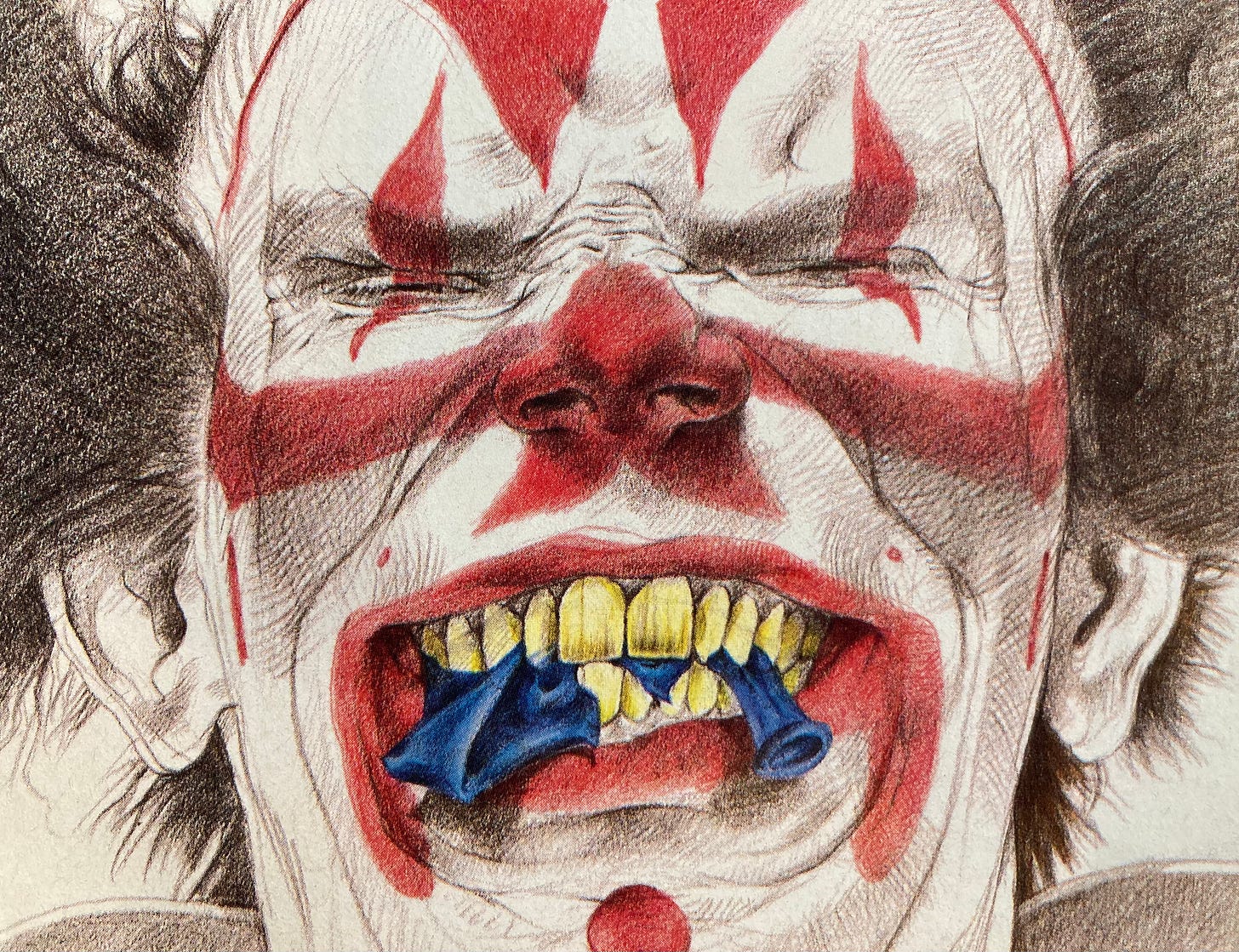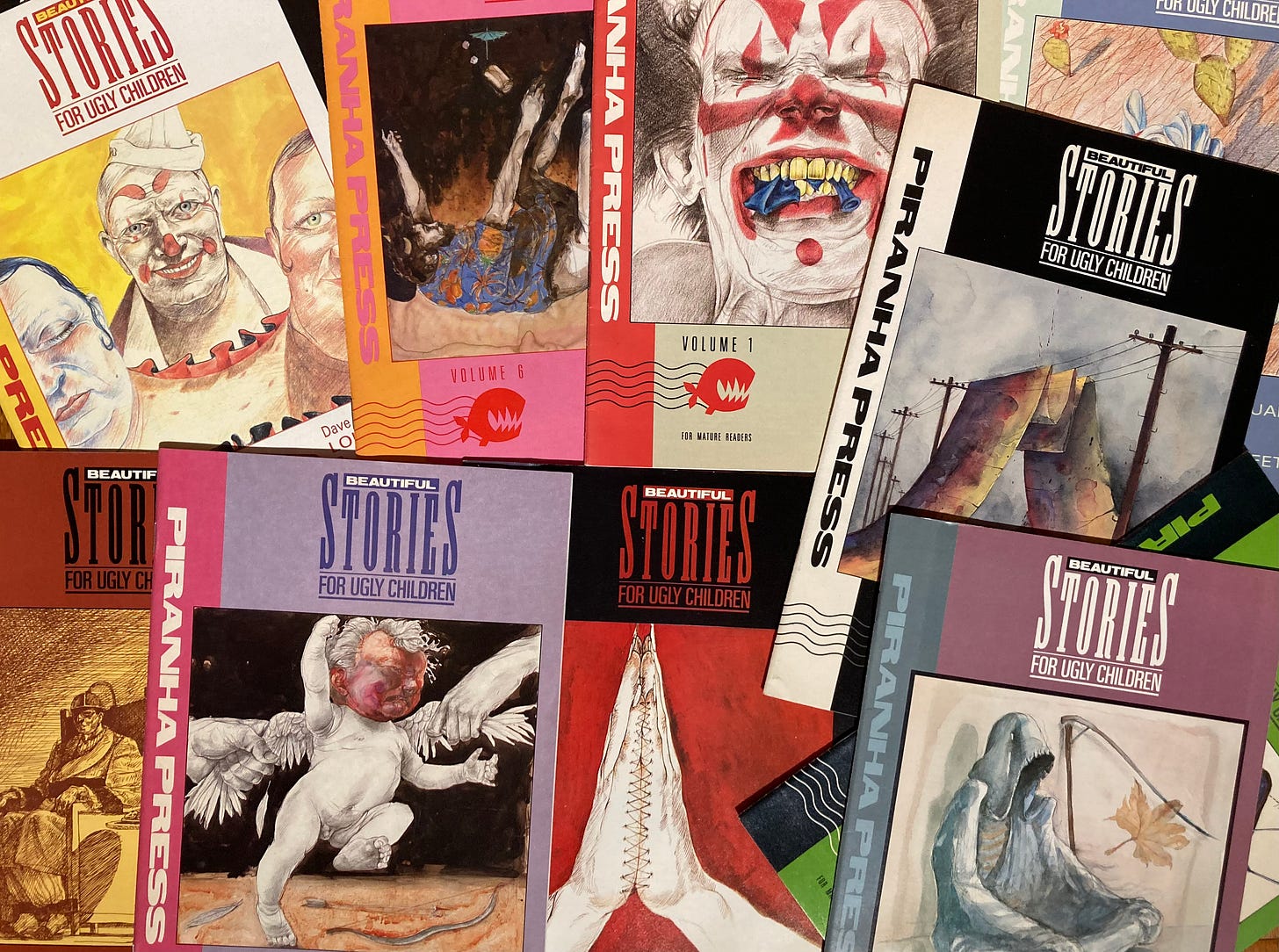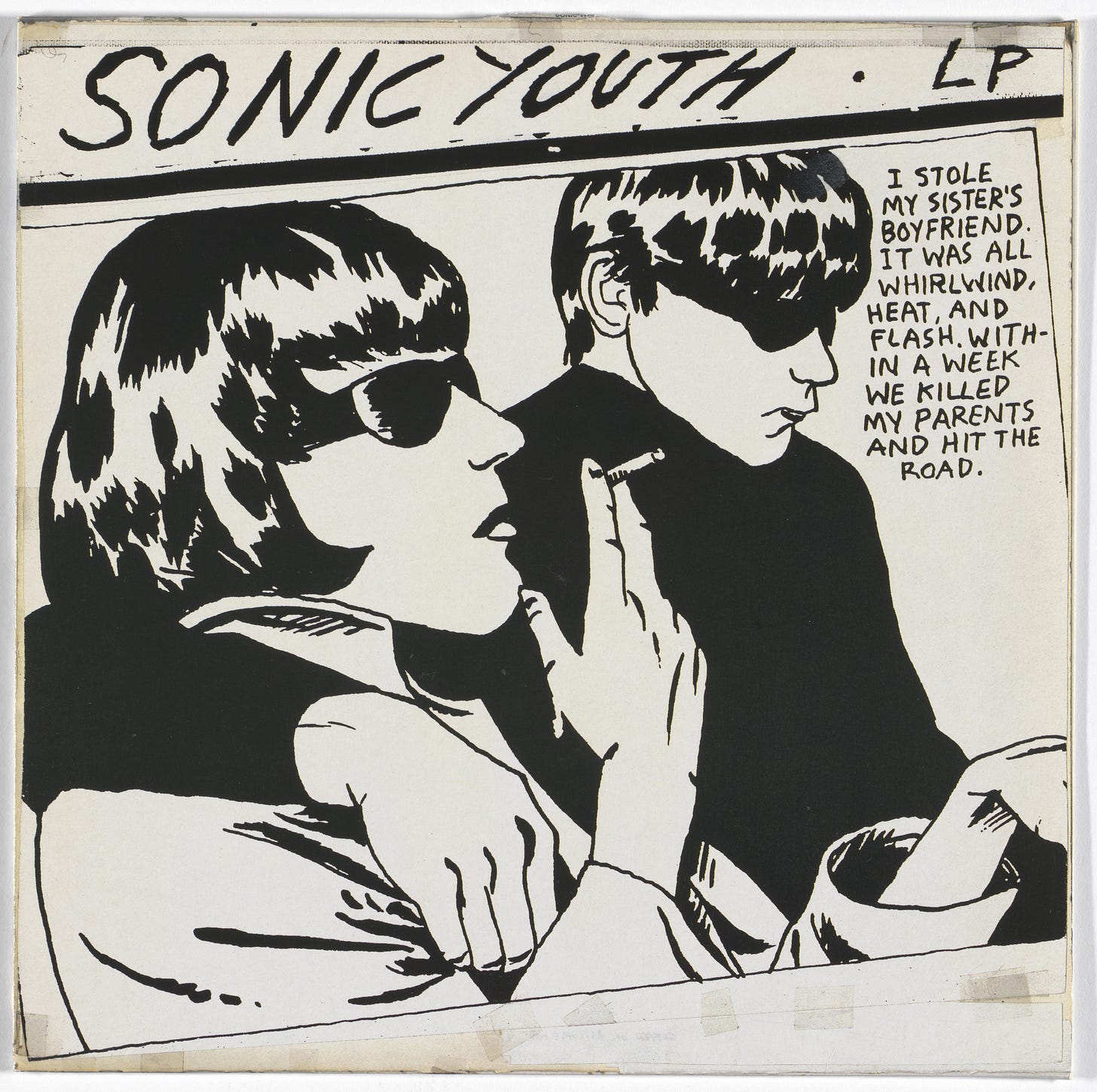BEAUTIFUL STORIES FOR UGLY CHILDREN
How a cult comic series was my gateway drug to literature
What was the most random thing you bought on eBay during the lockdown? Come on, we all bought something weird, didn’t we? Me? I purchased a near complete lot of the comic book series Beautiful Stories for Ugly Children for twenty bucks. Long out of print and never collected in trade paperback, single issues are still the only way to revisit this creation of writer Dave Louapre and artist Dan Sweetman.
That the fate of Beautiful Stories is an open-ended mystery is apt. After all, one day in 1989 it just showed up in comic book stores looking like no other title beside it. Each issue was a self-contained short story accompanied by Sweetman’s uneasy and jittery illustrations. The stories were morbid and realist reimaginings of myths and archetypes through an American sense of irony, with Louapre’s writing voice jumping from Jim Thompson to Joe Frank as needed.
My personal favorite? Cupid is kidnapped by an obnoxious couple and is so depressed by their relationship he chews off his own foot to escape. There’s also the story of lemmings on prom night who decide to rebel against group annihilation. The bleakest story was “Die Rainbow Die,” where a rainbow that won’t go away first brings delight to a town, but soon they’re tormented by it. Insomnia caused by twenty-four hours of color and light, then depression, and the surgical removal of smiles all follow before the rainbow itself dies of neglect, rots, and is nipped at by stray dogs. (Growing up in a rust-belt town I felt seen for the first time.)
None of those though compare to the cultural impact of the debut issue “A Cotton Candy Autopsy” and its opening lines about outlaw clowns on the run.
It was me, Bingo, Foo Foo, and Joey Punchinello from the street. Foo Foo stole the keys to the Dart while Bingo grabbed Addy the freak lady and some of our best pups. I got the booze out of the ringmaster’s trailer while he watched the big top burn.
For middle schoolers this was a cri de guerre for the coming 1990s, comparable in messaging to the Raymond Pettibon art that would adorn Sonic Youth’s Goo the following year.
Beautiful Stories didn’t invent the trope of the evil clown, but coming between John Wayne Gacy’s infamy in the 1980s, and Slipknot’s theatrics in the later 1990s, “Cotton Candy Autopsy” did give the genre’s red nose a fresh coat. (Artwork from the issue also wound up on the cover of Mr. Bungle’s debut album.)
And then the series stopped in 1992. Over the years I’ve seen some of its plots stolen by comedy series, but nothing else. No anniversary editions. Where did these Gen X Brothers Grimm even come from? Where did they go?
The truth is a little prosaic. After the success of the “for mature readers” revolution led by Frank Miller and Alan Moore, DC Comics found itself losing creators and readers to indie companies like Dark Horse and Kitchen Sink. Louapre and Sweetman had been hand selling chapbooks to zine and comic stores when DC signed them to Piranha Press, their pseudo indie imprint. It was a common business model for both publishers and record companies in the authenticity-obsessed 1990s and there it is: my own short story–style epiphany.
Beautiful Stories for Ugly Children was perfectly marketed to me by a corporation!
I had already been challenged by The Dark Knight and From Hell, but was not quite ready yet for Donald Barthelme, Kathy Acker, or Don DeLillo. Beautiful Stories for Ugly Children filled a gap in my smart-ass education that I’ll forever be thankful for, and the series deserves better than being out of print.
As for the creators, their fate was simple and relatable: Hollywood. Sweetman became an in demand storyboard and conceptual artist, Louapre a screenwriter. The lore goes that it was the rights entanglement from decades of development hell for “A Cotton Candy Autopsy” that stopped the series from ever being reprinted—the last industry item reported was 10 years ago with Derek Cianfrance reportedly adapting it. Yet in a twist provided by Louapre’s LinkedIn page, the duo now have the rights back.
And that itself is a beautiful story for ugly children.





